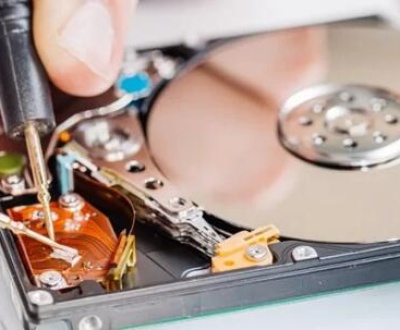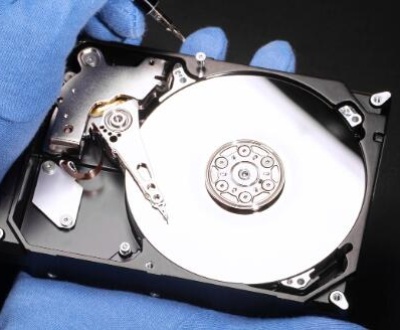Data loss is a significant concern for individuals and organizations alike. It can result from a variety of issues, ranging from hardware malfunctions to human errors, and can have serious implications for productivity, data integrity, and security. Understanding the different types of data loss is crucial for developing effective strategies to prevent and recover from such incidents.
1.1 Hard Drive Failures
Hard drives are mechanical devices with moving parts, making them susceptible to wear and tear. Common types of hard drive failures include:
Physical Damage: This can occur due to drops, shocks, or exposure to extreme temperatures. Physical damage can cause read/write head crashes, platter damage, or motor failures.
Logical Failures: These involve issues with the file system or partition table. Logical failures can result from file system corruption, accidental deletion, or software conflicts.

1.2 SSD Failures
Solid State Drives (SSDs) lack moving parts but are still prone to failure:
Wear and Tear: SSDs have a limited number of write cycles. Over time, the cells storing data can wear out, leading to data loss.
Firmware Issues: Bugs or corruptions in the SSD firmware can lead to data inaccessibility.
1.3 RAID Array Failures
Redundant Array of Independent Disks (RAID) configurations are designed to enhance data redundancy and performance. However, RAID arrays can still fail:
RAID 0 Failure: In RAID 0. data is striped across multiple disks. A failure in any single disk results in complete data loss.
RAID 5/6 Failure: These configurations offer redundancy through parity data. However, multiple disk failures or corruption of parity data can lead to data loss.
1.4 External Drive Failures
External drives, including USB drives and external hard drives, are prone to issues such as:
Connector Damage: Physical damage to connectors or cables can cause data loss or inaccessibility.
File System Corruption: Unexpected disconnections or improper ejection can lead to file system corruption on external drives.
2. Software Failures
2.1 Operating System Corruption
Operating system issues can result in data inaccessibility:
System Crashes: Crashes or improper shutdowns can corrupt system files and affect data access.
Boot Sector Corruption: Damage to the boot sector can prevent the operating system from starting and accessing data.
2.2 File System Corruption
File systems manage how data is stored and retrieved. Corruption in file systems can lead to:
Lost Files: Files may become inaccessible or appear missing due to corruption.
Error Messages: Users may encounter error messages when attempting to access affected files or directories.
2.3 Software Bugs
Software bugs or glitches can cause:
Data Corruption: Bugs in applications or operating systems can lead to data corruption during read/write operations.
Incompatibility Issues: Software updates or compatibility issues can cause data loss if not properly managed.
2.4 Accidental Deletion
Human error is a common cause of data loss:
File Deletion: Accidental deletion of files or folders can result in data loss, though files may be recoverable from the recycle bin or trash.
Format Operations: Formatting a drive or partition can erase all data, though recovery may be possible if the data has not been overwritten.
3. Cybersecurity Threats
3.1 Malware and Ransomware
Cyber threats can cause significant data loss:
Malware: Malicious software can corrupt, delete, or encrypt data. Examples include viruses, worms, and Trojans.
Ransomware: Ransomware encrypts data and demands a ransom for decryption. If a ransom is not paid, data may be lost permanently.
3.2 Hacking and Unauthorized Access
Data breaches and hacking attempts can lead to:
Data Theft: Sensitive information can be stolen and used for malicious purposes.
Data Tampering: Hackers may alter or delete data, leading to integrity issues and data loss.
3.3 Phishing Attacks
Phishing involves tricking users into revealing sensitive information:
Credential Theft: Phishing attacks can lead to unauthorized access to accounts and data loss.
Data Deletion: Phishing schemes may also result in malicious actors deleting or corrupting data.
4. Environmental Factors
4.1 Natural Disasters
Natural disasters can cause extensive data loss:
Floods: Water damage from flooding can ruin electronic devices and storage media.
Fires: Fires can destroy hardware and data stored on physical media.
Earthquakes: Seismic activity can physically damage storage devices and infrastructure.
4.2 Power Surges and Outages
Power issues can affect data integrity:
Power Surges: Sudden spikes in electrical power can damage hardware components and lead to data loss.
Power Outages: Unexpected shutdowns due to power loss can cause file system corruption and data inaccessibility.
4.3 Temperature Extremes
Extreme temperatures can affect data storage devices:
Heat: Excessive heat can cause hardware failures and data corruption.
Cold: Extremely cold temperatures can affect the physical components of storage devices.
5. Human Error
5.1 Mistaken Actions
Mistakes made by users can lead to data loss:
Accidental Overwriting: Saving new data over existing files can result in data loss.
Improper Backup Management: Failing to create or maintain backups can lead to permanent data loss if primary data is lost.
5.2 Misconfiguration
Incorrect configurations can cause:
Access Issues: Misconfigured permissions can restrict access to data or make it appear lost.
System Failures: Incorrect system settings or updates can lead to data inaccessibility or corruption.
5.3 Insufficient Training
Lack of training can result in:
Improper Usage: Users may unintentionally delete or modify critical data.
Failure to Implement Best Practices: Without proper knowledge, users may fail to follow best practices for data protection and recovery.
6. Data Loss Recovery Techniques
6.1 Backup and Restore
Regular backups are a fundamental method for data recovery:
Full Backups: Complete copies of data can be restored in the event of data loss.
Incremental and Differential Backups: These backups capture changes since the last backup, offering efficient data protection.
6.2 Data Recovery Software
Specialized software tools can recover lost data:
File Recovery Tools: These tools can restore accidentally deleted or corrupted files.
Partition Recovery Tools: These tools can recover lost or damaged partitions and their data.
6.3 Professional Data Recovery Services
In severe cases, professional services may be necessary:
Clean Room Recovery: For physically damaged drives, clean room environments are used to perform repairs and recover data.
Logical Recovery: Professionals can address complex logical failures and data corruption issues.
Data loss can arise from a multitude of sources, including hardware failures, software issues, cybersecurity threats, environmental factors, and human error. Understanding the different types of data loss and their causes is crucial for developing effective prevention and recovery strategies. Implementing robust backup practices, utilizing data recovery tools, and seeking professional assistance when necessary can help mitigate the impact of data loss and safeguard valuable information.
About us and this blog
Panda Assistant is built on the latest data recovery algorithms, ensuring that no file is too damaged, too lost, or too corrupted to be recovered.
Request a free quote
We believe that data recovery shouldn’t be a daunting task. That’s why we’ve designed Panda Assistant to be as easy to use as it is powerful. With a few clicks, you can initiate a scan, preview recoverable files, and restore your data all within a matter of minutes.
Subscribe to our newsletter!
More from our blog
See all postsRecent Posts
- Data recovery salt lake city utah 2025-04-18
- Data recovery sacramento 2025-04-18
- Data recovery miami 2025-04-18

 Try lt Free
Try lt Free Recovery success rate of up to
Recovery success rate of up to









